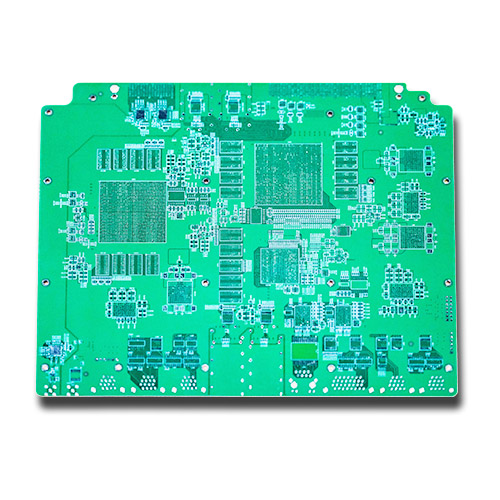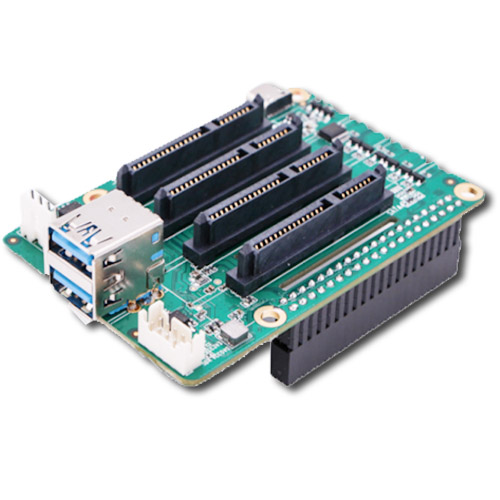
In the fields of 5G communication, consumer electronics, automotive electronics, industrial control, and medical care, which are the rapid development of PCB assembly. The corresponding multi-layer board, HDI, soft board, packaging substrate, and other types of product demand will be more prominent, so PCBA is also called the "Mother of the Electronic Industry".
PCB is usually made of insulating material, such as epoxy resin enhanced by glass fiber. By printing or etching, a copper layer is formed on the board to form a conductive path and connection point.
According to different application and design requirements, there are many types of PCB, including single-layer boards, double-layer boards, multi-layer boards, high-density interconnect boards (HDI), etc.
With the continuous development of electronic devices, the design of printed circuit boards has continued to evolve. High-density, high-performance, light, and light short (Miniaturization) is one of the main trends of the current PCB design.
In the fields of 5G communication, consumer electronics, automotive electronics, industrial control, and medical care, PCB demand has ushered in rapid development. Different application areas may have higher requirements for specific types of PCB, such as considering signal integrity in high-frequency applications. The demand for high-performance and high-density PCB assembly has further increased.
Multi-layer boards, HDI (high-density interconnection), soft boards, packaging substrates, etc. are some special types of PCB. They have promoted the continuous innovation of PCB assembly technology while meeting different application needs.

In the field of industrial control, various technical problems may be encountered during the PCBA manufacturing process. Here are some common problems:
The problems of Poor welding may not be completely wet, welded, and broken welding. Welded welded welds may cause short circuits.
The component is installed in the reverse position, causing abnormal circuits. The component is not installed in the specified position correctly, which may affect signal transmission and circuit performance.
During the assembly process, components may be damaged due to inappropriate anti-static measures. In the process of installation or processing, components may be damaged due to mechanical stress.
Unreasonable PCBA wiring may cause signal integrity, such as string disturbance and timing problems. Poor power supply layout may cause voltage unstable in some parts.
The lack of real-time process monitoring may cause problems to be tested in time on the production line. Inadequate testing also may lead to the flow of defective products into the market.
Inappropriate temperature and humidity conditions may affect the performance of welding and components.
Dust and foreign bodies in the production environment may hurt the performance of the circuit board.

Introduce advanced soldering technologies, such as reflow soldering and wave soldering, to ensure accurate control of soldering temperature and time. Use high-quality solder and implement strict quality control during production, including visual inspection and automated testing.
Implement an automated component installation system that uses vision guidance and precise mechanical positioning to ensure components are installed correctly. Strict inspection procedures are implemented during the manufacturing process, including manual and automated inspections, to ensure correct component location and polarity.
Implement anti-static measures, including using anti-static floors, wearing anti-static clothing, and providing appropriate storage conditions. Use automated processing equipment to reduce the possibility of human damage, and strengthen employee training to increase protection awareness.
Conduct a thorough board design review to ensure proper routing and power distribution. Use advanced design tools and simulation techniques to identify and resolve potential issues before they happen. Optimize layout with simulation and analysis tools to improve circuit performance.
Solution: Introduce a real-time process monitoring system to monitor process parameters and adjust them in real-time. Strengthen testing procedures, including automated testing and manual inspection, to ensure product quality meets specified standards. Establish quality control standards and train employees to improve their quality awareness.
Control the temperature and humidity of the production environment and use appropriate filtration systems to reduce dust. Implement appropriate dust protection measures such as sealed production lines and clean rooms. Ensure employees follow best practices for environmental controls.
上一条:Looking for Tips on Utilizing PCBA in Industrial Control? We've Got You Covered!
下一条:What Does A Good PCBA Board Mean to Electronic Products?
